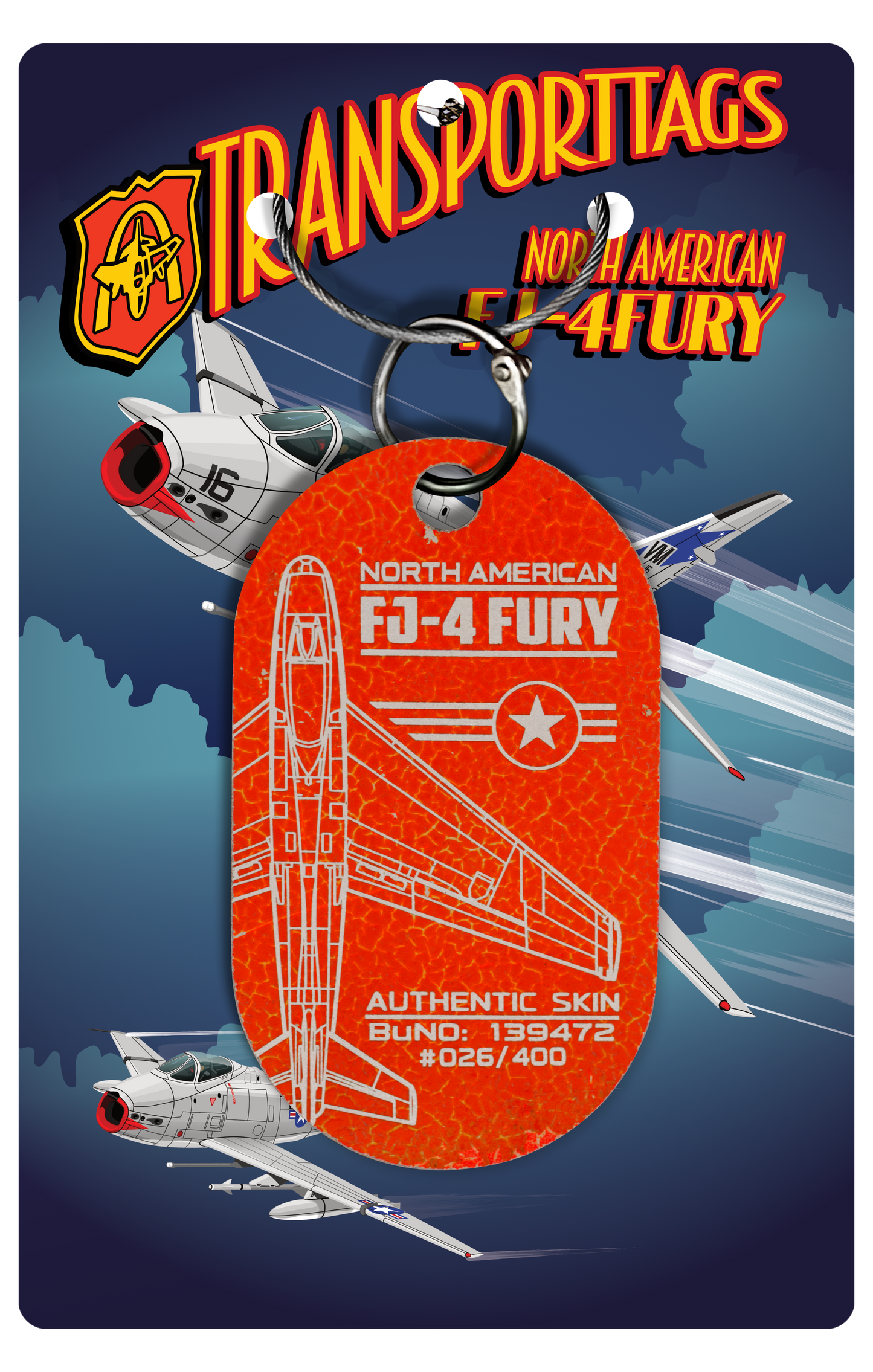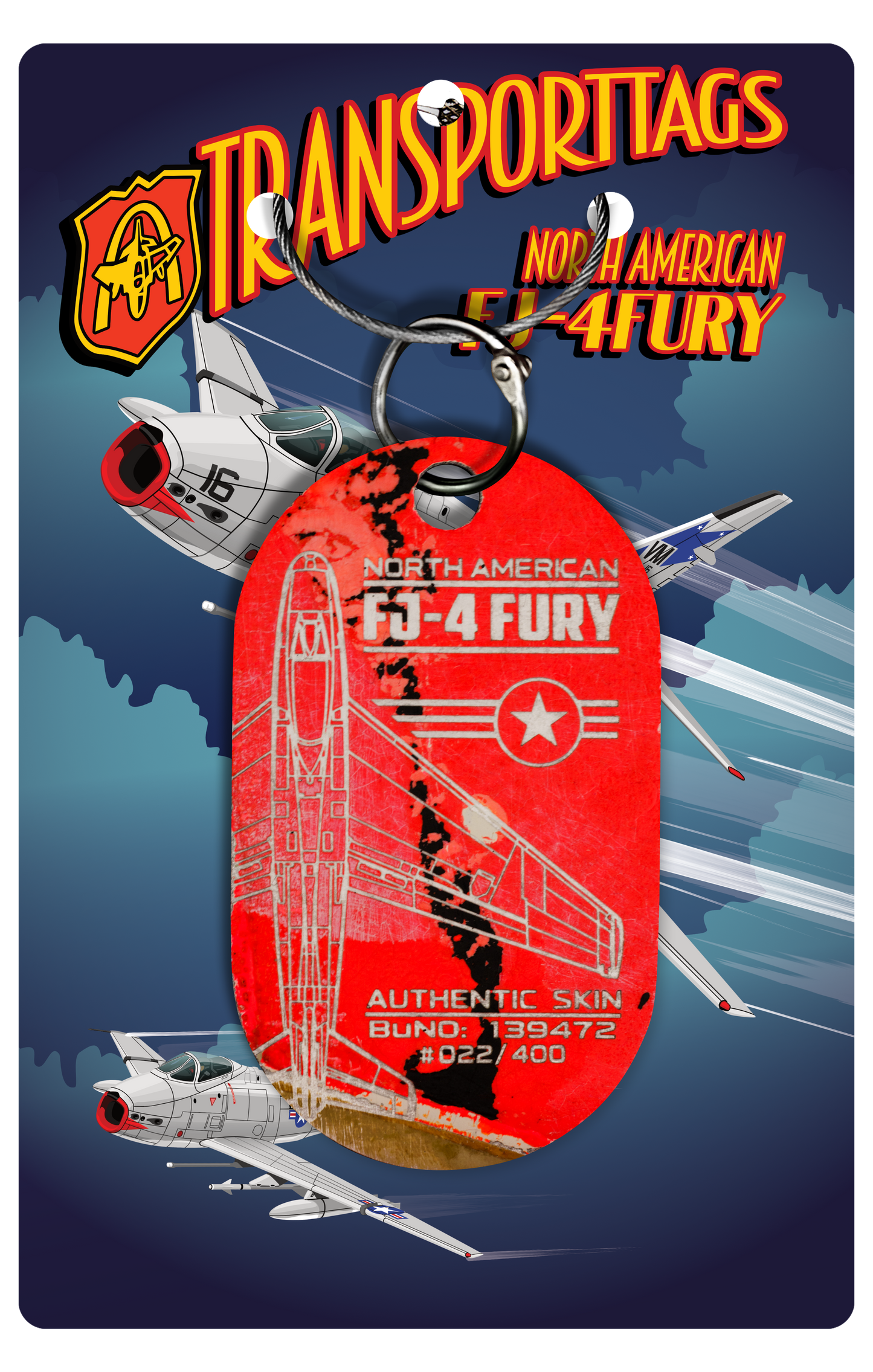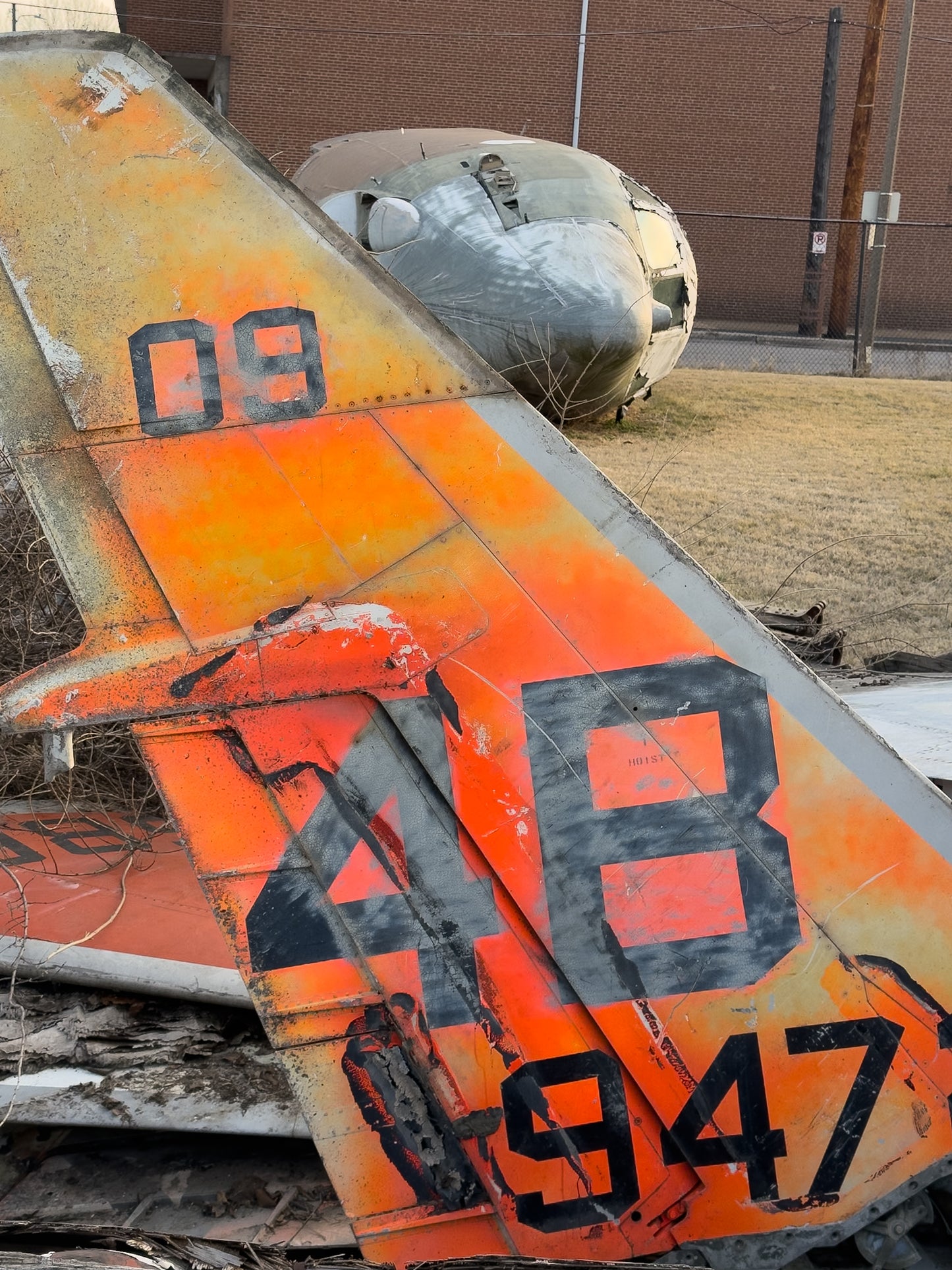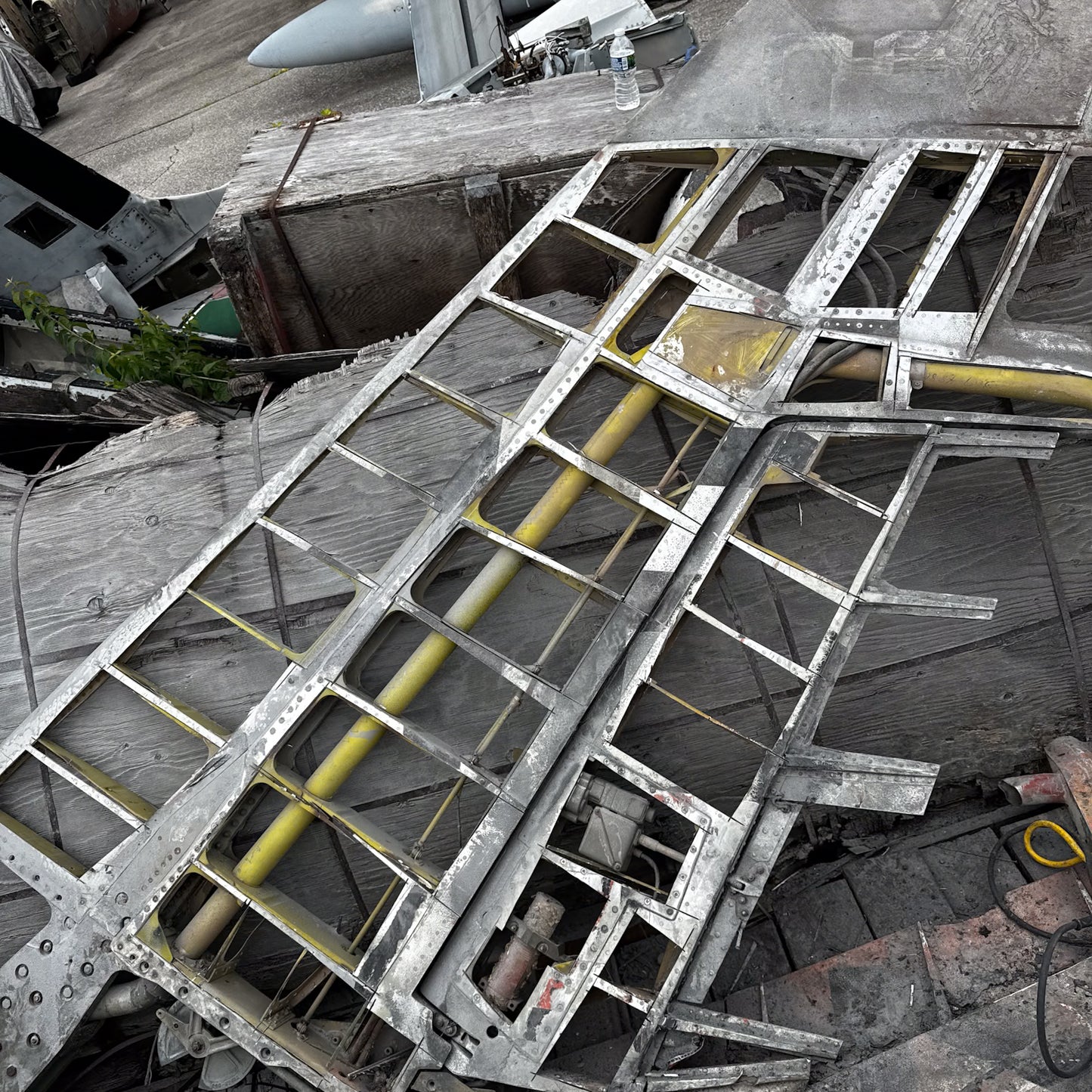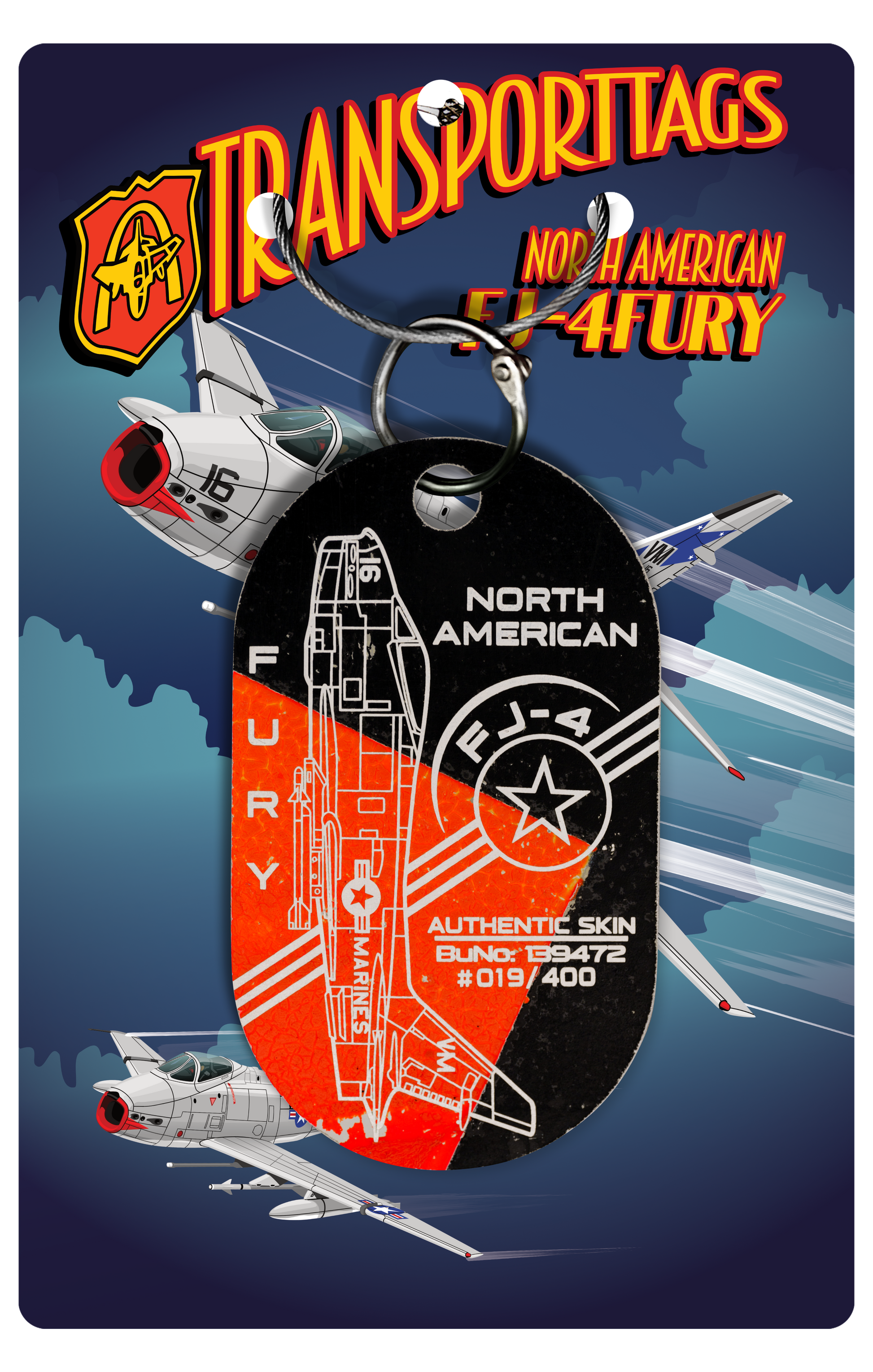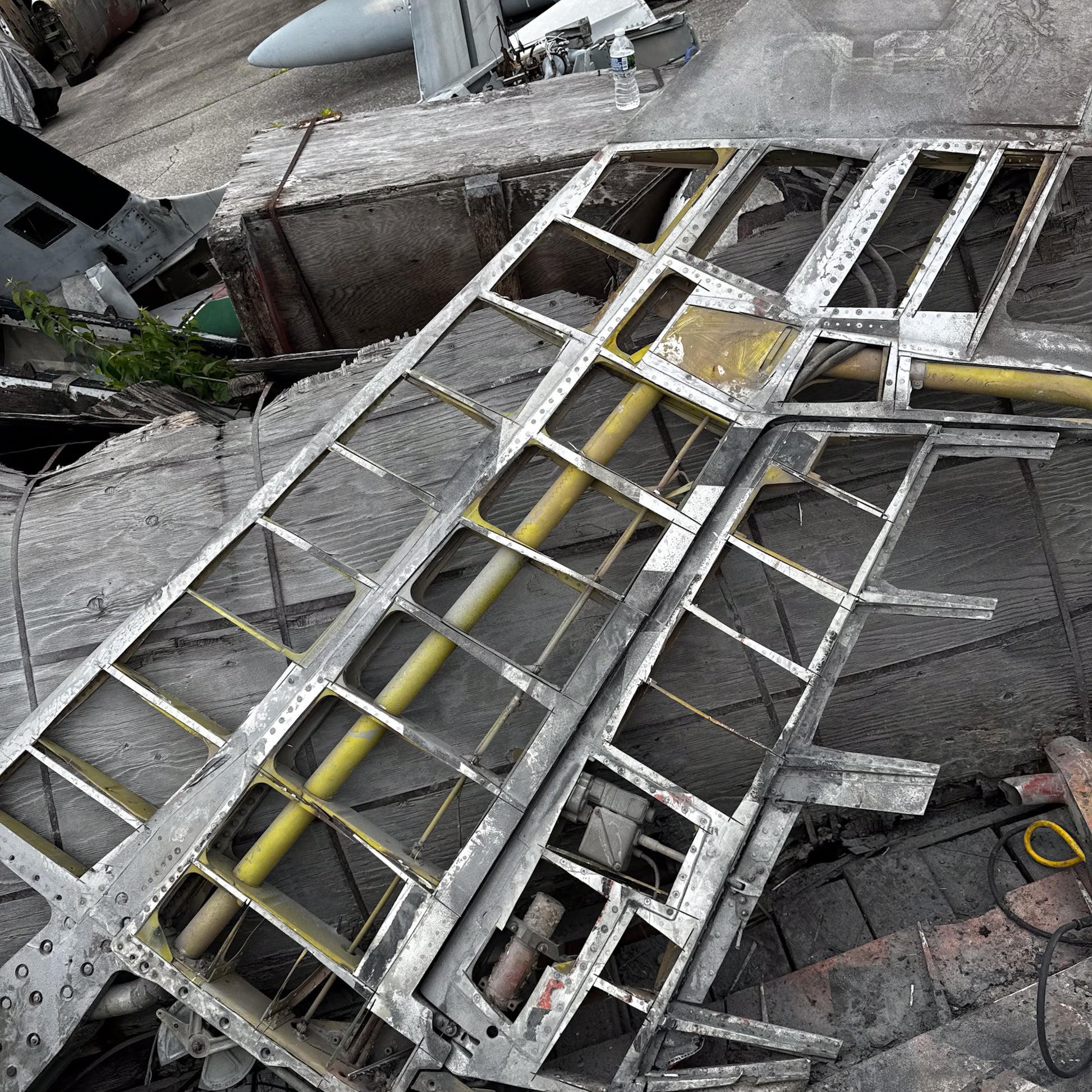FJ-4 Fury
FJ-4 Fury
Couldn't load pickup availability
Our latest creation, the FJ-4 Fury BuNo: 139472 TransportTag, is a masterpiece that showcases a stunning combination of colors, meticulously designed to capture the essence of this iconic aircraft. This release is highly limited, with only 400 pieces available, making it a must-have for collectors and enthusiasts alike. (Please note that Transport Tags LLC is NOT an authorized or licensed distributor of the FJ-4 Fury, North American Aviation or Boeing Aircraft Company, and uses their name, markings, etc., for identification purposes ONLY in accordance with the Lanham Act).

Our Fury pictured in Taiwan.

Our FJ-4 Fury, BuNo: 139472, was an integral part of VMF-323 “Death Rattlers”, a squadron renowned for its valor and precision. It was then later attached to VMF-451 and was operationally deployed to Taiwan during the 1958 Taiwan Strait Crisis - a monumental battle between Taiwan and China when China attempted an invasion.

Marine Fighter Squadron VMF - 451
This aircraft also shares a lineage with the illustrious Sabre family by North American Aviation, known for their significant roles in aviation history.
The FJ-4 Fury, known for its sleek design and remarkable performance, represents a significant milestone in aviation history. With its powerful engine and advanced aerodynamics, this aircraft played a vital role to the Navy and Marines during its service, showcasing the pinnacle of aviation excellence. TransportTags is proud to be the first company ever to create collectible tags commemorating the FJ-4 Fury.


Photos by James Clark Bissell
Vehicle History
Vehicle History
The North American FJ-4 Fury has an interesting history as a jet fighter aircraft that served in both the United States Navy and Marines during the Cold War era. The company that developed the FJ-4 Fury, North American Aviation, was a key player in the aerospace industry, founded in 1934 and renowned for its innovative aircraft designs. The company gained prominence during World War II with the production of the P-51 Mustang, and it continued to excel in the post-war era with the F-86 Sabre jet fighter. In the 1950s, North American developed the FJ-4 Fury, a carrier-based fighter aircraft that showcased significant advancements in performance and versatility, meeting the needs of the U.S. Navy and Marine Corps. The FJ-4 featured a powerful turbojet engine, advanced armament, and the capability to operate in both air-to-air and ground attack roles. Beyond military aviation, North American Aviation also contributed to the space program, working on projects like the X-15 and the Apollo missions. The company's legacy endures today, influencing modern aerospace engineering and design through its groundbreaking innovations.

The FJ-4 Fury was developed from the earlier FJ-1 and FJ-2 Fury models, which were designed to meet the Navy's need for a carrier-based jet fighter. The FJ-4 was introduced in the early 1950s as an improvement over its predecessors, featuring enhanced performance, armament, and avionics. It was part of North American Aviation's effort to produce a versatile and effective fighter that could operate from aircraft carriers.
The FJ-4 Fury was designed with a mid-wing configuration and a conventional tail, which contributed to its stability and agility. It was powered by a Pratt & Whitney J57 turbojet engine, providing significant thrust and allowing it to reach speeds of up to 700 mph hi(1,126 km/h). The aircraft was equipped with four 20 mm M61 cannons and had multiple hardpoints for carrying bombs and missiles, enabling it to conduct both air-to-air and air-to-ground missions.
The FJ-4 Fury entered service in the mid-1950s and quickly became a key component of the U.S. Navy's air power. It was deployed on various aircraft carriers and participated in training exercises and operations during a tense period of the Cold War. The Fury's versatility made it suitable for various roles, including fighter interception and ground attack.
The FJ-4 was also used by the U.S. Marine Corps, which appreciated its capabilities for close air support and ground attack missions. The aircraft was involved in training and operational roles, with many pilots gaining valuable experience flying the Fury.
By the early 1960s, advancements in aviation technology led to the introduction of more modern jet fighters. As a result, the FJ-4 Fury began to be phased out in favor of newer aircraft like the McDonnell Douglas F-4 Phantom II. The last FJ-4s were retired by the mid-1960s, marking the end of an era for this iconic aircraft.
Despite its relatively short service life, the FJ-4 Fury played a significant role in the evolution of naval aviation during a pivotal time in history. Its design and capabilities influenced subsequent fighter aircraft, and it remains a notable example of mid-20th-century military aviation.
Today, the FJ-4 Fury is remembered by aviation enthusiasts and historians for its contributions to naval air power and its role in the development of jet fighter technology. TransportTags is proud to offer our FJ-4 Fury tag honoring the legacy of this amazing aircraft.
Product Specifics
Product Specifics
Please note that the back of these tags will be blank. There will be nothing on them unless customization is chosen as an option at checkout. This is primarily due to the finish/paint, which makes it more difficult to engrave on the back.
Please also note that the “Weathered Fury” tags will all be very different. Different colors from different areas of the aircraft, etc., that exhibit weathering and fade.
Some interior green tags will have stenciling, and others will be solid green. These will be shipped at random.
Vehicle Stats
Vehicle Stats

The North American FJ-4 Fury was a jet fighter aircraft designed for the United States Navy and also served with the Marines.
Specifications and Stats:Crew: 1 (pilot)
Length: 43 ft 4 in (13.2 m)
Wingspan: 38 ft 0 in (11.58 m)
Height: 13 ft 0 in (3.96 m)
Wing Area: 400 sq ft (37.2 m²)
Empty Weight: 19,500 lb (8,840 kg)
Maximum Takeoff Weight: 30,000 lb (13,600 kg)
Performance:
Powerplant: 1 × Pratt & Whitney J57-P-20 turbojet
Thrust: 10,200 lbf (45.4 kN) with afterburner
Maximum Speed: 700 mph (1,126 km/h, Mach 0.9)
Range: 1,200 mi (1,900 km)
Service Ceiling: 45,000 ft (13,716 m)
Rate of Climb: 5,000 ft/min (25.4 m/s)
Armament:
Guns: 4 × 20 mm M61 cannons
Hardpoints: 4 × underwing hardpoints for carrying bombs or missiles, typically up to 6,000 lb (2,722 kg) of external stores.
Additional Features:
The FJ-4 was an upgraded version of its predecessors, incorporating improvements in avionics and armament, making it more capable for air-to-air combat and ground attack missions.
The FJ-4 Fury played a significant role in military aviation during the late 1950s and early 1960s.
Product Dimensions
Product Dimensions
Card Dimensions
Length: 5 1/2"
Width: 3 1/2"
Tag Dimensions:
Length: 3"
Width: 1.75"
Thickness: 1mm - 4mm
Disclaimer
Disclaimer
TransportTags are unique, handcrafted pieces made from genuine vehicle skin. Features like scratches, blemishes, or minor discolorations testify to their unique vintage appeal and authenticity. By purchasing, you accept the product may differ slightly from website images. Transport Tags LLC uses authentic material from transportation vehicles, potential containing hazardous substances. Not intended for ingestion, inhalation, or use by small children. Transport Tags LLC is an independent company, not affiliated with, sponsored or endorsed by any entities. We use branded names and insignia for identification under the provisions of the Lanham Act, without implying any association or endorsement. For more information, read our detailed product safety and legal information here.
Share




